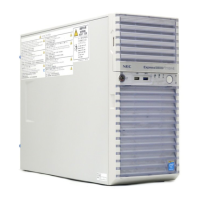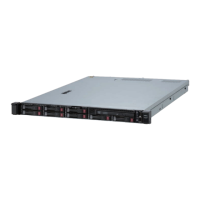(a) To configure a custom action
1. On the Custom Actions page, do one of the following:
– In the File field, type the full path name and file name of the executable file you want to run. (The
file must already exist on the system disk.)
Example: C:\bin\mybatchfile.bat
–
Click Browse to select the executable file, and click Open.
2. Next to Arguments, type any arguments that you need to run with your executable.
See Chapter 2 (1.5.3 (8) Programming Notes for Custom Actions) for information about passing optional
Active Upgrade environment variables to your executable.
3. In the drop-down list for Control type, select the option that best describes when the Active Upgrade
Console will execute your custom action, as discussed in the below table.
Control Types for Custom Actions
Control Type Purpose
Start Application
Executes the custom action whenever the Active Upgrade Console needs to start
applications. For example, the console needs to restart applications on the Upgrade Side
when you merge the system.
Stop Application
Executes the custom action whenever the Active Upgrade Console needs to stop
applications. For example, the console needs to stop applications on the Upgrade Side
when you split the system. It also stops applications on the Production Side when you
merge the system.
Readiness Check
Executes the custom action once during the readiness check, before you initiate the
Active Upgrade process. This control type allows you to build your own verifications into
the readiness check.
Advanced
Executes the custom action during every step of the Active Upgrade process, including
interim steps such as PrepareSplit and PrepareMerge, which occur prior to the Split and
Merge operations.
This control type allows you to have more precise control over a custom action. Your
executable will run each time the Active Upgrade process switches states, but you can
write a program with conditional statements based on Active Upgrade environment
variables to specify exactly when and where particular tasks should be executed. For
example, you can write a conditional statement that will trigger only on the Upgrade Side if
the system is in merge mode. See Chapter 2 (1.5.3 (8) (b) Using Active Upgrade
Environment Variables).
If you have more than one custom action, the Advanced control type also allows you to
control the order in which the custom actions are executed (Timing drop-downn list).
Backup
Executes the custom action when the system is merged, allowing you to back up files that
were modified on the Production Side system disk while the system was in split mode
(before these files are lost during the commit process).
If you selected the Advanced control type, optionally select an item from the Timing drop-down list
which best describes the order in which you want this custom action to run with your other custom
actions. The below table, "Timing for the Advanced Control Type", describes the timing options. If the
timing does not matter, keep the Default setting.
Important
The Timing will not affect the order in which custom actions run with other Active

